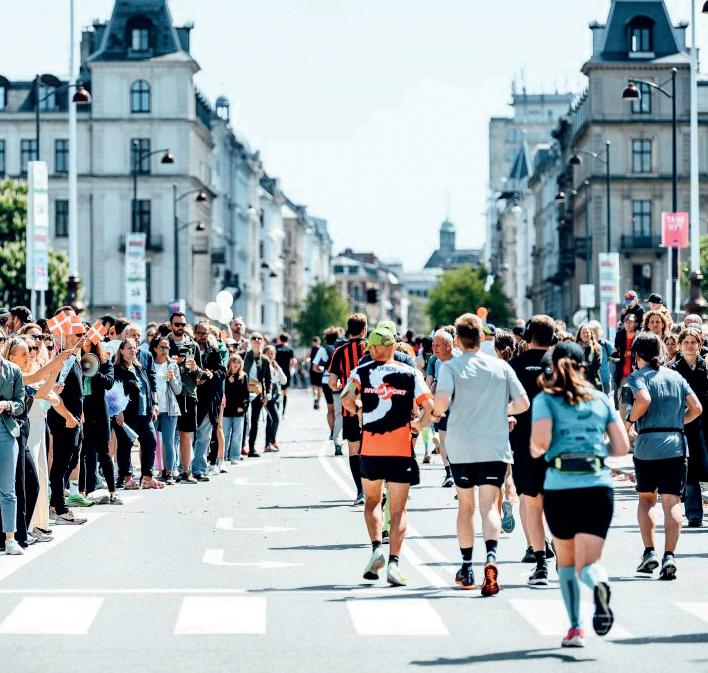
4 minute read
How to organize a sport event #WithoutWaste?
Organizing a grassroots sport event
#WithoutWaste requires careful planning and implementation of sustainable practices. Here are some key steps to help you organize such an event:
Advertisement
1. Set your goals: Define your objectives and establish a clear vision for organizing a #WithoutWaste event. Identify the specific waste reduction and sustainability targets you want to achieve.
2. Create a waste management plan: Develop a comprehensive waste management plan that outlines strategies for waste reduction, recycling, and proper disposal.
3. Choose a sustainable venue: Select a venue that aligns with your sustainability goals. Look for facilities that offer recycling infrastructure, composting options, and energy-efficient amenities.
© Natã Romualdo, Pexels
4. Minimize single-use items: Encourage participants and vendors to avoid single-use items.
5. Provide recycling stations: Set up clearly labeled recycling stations throughout the event area. Ensure participants understand how to separate their waste properly and provide clear signage to guide them.
6. Composting options: If feasible, establish composting stations for organic waste generated during the event.
7. Collaborate with eco-friendly vendors: Work with vendors who prioritize sustainability and offer environmentally friendly products and services.
8. Promote sustainable transportation: Encourage participants to use sustainable transportation options such as walking, cycling, or carpooling. Provide information about public transportation routes and consider organizing shuttle services from nearby transportation hubs.
9. Educate and engage participants: Raise awareness about the importance of waste reduction and environmental sustainability. Organize workshops, presentations, or interactive activities to educate participants about recycling, composting, and other eco-friendly practices.
10. Volunteer involvement: Recruit volunteers who are passionate about sustainability to assist with waste management, recycling, and education efforts during the event. Provide them with clear instructions and training on waste management practices.
11. Monitor and measure progress: Implement a system to track and measure waste reduction and recycling efforts. Collect data on the amount of waste generated, recycling rates, and any challenges or successes encountered.
12. Communicate and celebrate: Promote your #WithoutWaste event through various channels, such as social media, websites, and local media outlets. Share success stories and engage participants, sponsors, and the community in celebrating the event’s environmental achievements.
How to organize a GSE #WithoutWaste in an outdoor public space?
Organizing a grassroots sport event
#WithoutWaste in an outdoor public space requires additional considerations to ensure minimal environmental impact. Here are some specific steps to help you organize such an event:
1. Choose a suitable location: Select a public space that allows for the activities you have planned and aligns with your #WithoutWaste goals. Consider factors such as waste management infrastructure, accessibility, and available amenities.

2. Obtain necessary permits: Check with local authorities and obtain any required permits or permissions to host the event in the chosen public space. Ensure you comply with all regulations and guidelines related to waste management and environmental impact.
3. Conduct a waste audit: Assess the waste generation potential of the event by conducting a waste audit. Identify the types of waste likely to be generated and plan strategies to minimize them. This can include food waste, packaging waste, and single-use items.
4. Implement waste reduction measures: Encourage participants, vendors, and staff to adopt waste reduction practices. Consider partnering with local waste management services to provide recycling and composting options.
5. Set up waste stations: Place clearly labeled waste stations throughout the event area. Include separate bins for recycling, composting, and general waste. Ensure proper signage and instructions are provided to guide participants in sorting their waste correctly.
6. Plan for waste collection and disposal: Coordinate with waste management services or local authorities to ensure proper collection and disposal of waste. Arrange for separate collection of recyclables and compostables to maximize waste diversion from landfill.
7. Engage volunteers: Recruit volunteers to assist with waste management and educate participants about proper waste disposal. Train them on waste sorting guidelines and provide them with the necessary tools and resources to carry out their tasks effectively.
8. Encourage sustainable transportation: Check the tip on the previous page.
9. Communicate your #WithoutWaste message: Use various communication channels to inform participants, sponsors, and the community about your event’s sustainability efforts. Emphasize the importance of waste reduction and encourage attendees to actively participate in creating a waste-free environment.
10. Track and evaluate progress: Monitor and measure your waste reduction efforts throughout the event. Collect data on waste diversion rates, recycling volumes, and participant feedback.
11. Leave no trace: Ensure the event space is left clean and free of waste after the event. Coordinate with waste management services to conduct a thorough clean-up and remove any remaining waste responsibly.
How to communicate about your Sport
#WithoutWaste event?
Checklist
□ Define your event’s vision and commitment to sustainability.
□ Choose a catchy and descriptive event hashtag, such as #WithoutWaste, to promote your cause.
□ Develop a clear and concise messaging strategy that highlights the event’s eco-friendly initiatives.

□ Design a dedicated section on your event website that explains the #WithoutWaste concept and provides information on sustainability measures.
□ Utilize social media platforms to share updates, educational content, and behind-thescenes glimpses of your sustainability efforts.
□ Collaborate with local influencers, athletes, and environmental activists to amplify your message and reach a broader audience.
□ Encourage participants and attendees to pledge their commitment to waste reduction by using interactive features like online pledges or signature walls.
□ Offer incentives for eco-friendly behavior, such as discounted entry fees for participants who bring reusable water bottles or encourage carpooling.
□ Provide detailed information on waste management practices at the event, including designated recycling stations and composting options.
□ Partner with local environmental organizations or NGOs to host educational workshops or interactive activities related to waste reduction and environmental conservation.
□ Engage volunteers to serve as waste management ambassadors, guiding participants and attendees on proper waste disposal practices.
□ Use signage and visual cues throughout the event venue to encourage participants to minimize waste and recycle properly.
□ Establish partnerships with local businesses to sponsor eco-friendly giveaways or rewards for participants who actively participate in waste reduction initiatives.
□ Include sustainability-focused announcements and reminders during event briefings, opening ceremonies, and award ceremonies.
□ Capture and share success stories and testimonials from participants and attendees who have embraced the #WithoutWaste concept.
□ Offer post-event surveys to gather feedback and assess the effectiveness of your sustainability efforts, allowing you to make improvements for future events.
□ Express gratitude and recognition for participants, volunteers, sponsors, and partners who have contributed to the success of the event and its sustainability goals.
□ Remember, effective communication is key to creating awareness and fostering a culture of sustainability. By following this checklist, you can ensure that your grassroots sport event is communicated as a #WithoutWaste event, inspiring others to embrace eco-friendly practices and make a positive impact on the environment.


